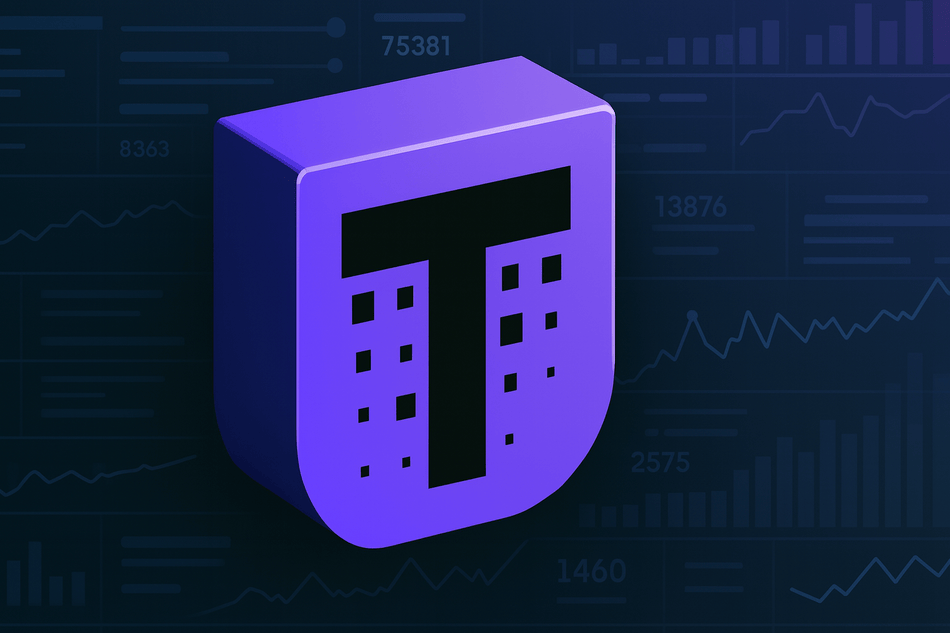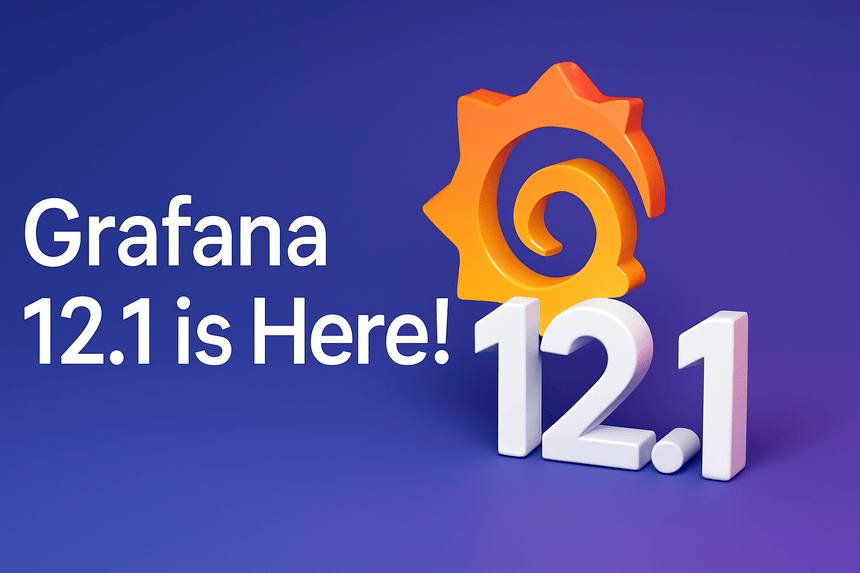In the world of observability and infrastructure monitoring, logging is one of the critical pillars, alongside metrics and traces. Choosing the right logging technology can significantly impact your ability to monitor, troubleshoot, and optimize your systems.
Two popular logging solutions that often come up in discussions are Grafana Loki and Elasticsearch. While both serve the purpose of log aggregation and analysis, they differ in architecture, deployment, scalability, querying capabilities, and cost. In this article, we’ll dive deep into the comparison of Loki and Elasticsearch to help you decide which one might be the best fit for your needs.
Setup and Deployment
Loki
Loki is designed with simplicity in mind, making it relatively easy to set up and deploy. It offers two primary deployment modes:
1. Binary Mode (Standalone Deployment) :
Loki can be deployed as a single binary file, which is copied to the directory where it needs to run. On Linux systems, it can be configured to run as a service.
In this mode, Loki creates a default data directory on the virtual machine to store logs. While this approach is straightforward, it is not highly scalable because the storage capacity is limited by the disk space on the VM.
2. Microservices Mode (Scalable Deployment):
For more scalable and production-ready deployments, Loki can be deployed in a microservices architecture. In this mode, Loki’s features are split into separate microservices, each handling specific tasks such as ingestion, querying, and storage. This approach is more scalable and fault-tolerant, making it suitable for large-scale environments. Additionally, Loki integrates seamlessly with Kubernetes, making it a popular choice for cloud-native applications.
Elasticsearch
Elasticsearch, on the other hand, has a more complex deployment process compared to Loki. It is typically deployed as part of the Elastic Stack (ELK Stack), which includes Logstash for data ingestion and Kibana for visualization. Elasticsearch can be deployed in the following ways:
1. Binary Deployment:
Elasticsearch can be installed as a binary on a single machine, but this approach is not recommended for production environments due to scalability and fault-tolerance limitations.
2. Kubernetes Deployment:
Elasticsearch can also be deployed on Kubernetes using Helm charts or operators like the Elastic Cloud on Kubernetes (ECK). This approach is more scalable and suitable for production environments. However, Elasticsearch’s resource requirements (memory and CPU) are significantly higher than Loki’s, which can make it more challenging to manage in resource-constrained environments.
Scalability Features
Loki
Loki is built with scalability in mind, leveraging modern cloud-native technologies. Key scalability features include:
Loki leverages Memcached as a high-speed, in-memory caching layer to store index data, significantly improving query performance and reducing backend storage load. When a user queries logs, Loki first checks Memcached for the required index information, allowing for faster retrieval and lower latency compared to fetching data directly from long-term storage. This caching mechanism minimizes repeated lookups, reducing the number of expensive queries hitting the backend, thereby improving efficiency and lowering operational costs. By storing frequently accessed index metadata in memory, Memcached helps optimize query execution speed, system scalability, and resource utilization, ensuring Loki remains responsive even under heavy workloads. This approach not only accelerates log searches but also enhances the overall stability and performance of the system, making it an essential component in Loki’s architecture.
Loki utilizes hash rings as a consistent hashing mechanism to efficiently distribute log data across multiple instances, ensuring horizontal scalability and high availability. When logs are ingested, Loki assigns them to different instances based on a hashing algorithm, which maps each log entry to a specific node within the cluster. This approach allows for an even distribution of data, preventing any single instance from becoming a bottleneck. Additionally, hash rings enhance fault tolerance—if an instance fails, its assigned data can be quickly reassigned to another node without disrupting the system. This ensures seamless load balancing, redundancy, and efficient resource utilization, allowing Loki to scale dynamically as log volume increases. By leveraging hash rings, Loki maintains a resilient, distributed architecture that can handle massive amounts of log data while maintaining fast and reliable query performance.
Loki leverages object storage solutions such as Amazon S3, Google Cloud Storage, and MinIO to efficiently store and manage massive amounts of log data. Unlike traditional databases or block storage, object storage is designed to handle highly scalable, unstructured data while offering cost-effective, long-term retention. Since logs are write-heavy but read-sparse, object storage is an ideal backend for Loki because it allows for cheap storage at scale without the complexity of managing persistent disk volumes. Additionally, object storage provides high availability, durability, and redundancy, ensuring that log data remains accessible even in the event of hardware failures. This architecture enables Loki to separate compute from storage, meaning ingestion and query workloads can scale independently, improving performance and resilience. By utilizing object storage, Loki can efficiently manage log retention, archival, and retrieval, making it an optimal choice for large-scale log aggregation and observability.
Elasticsearch
Elasticsearch is a distributed search engine that scales horizontally using shards and replicas. Key scalability features include:
In Elasticsearch, data is divided into shards, which are smaller, self-contained subsets of the dataset that can be distributed across multiple nodes in a cluster. This sharding mechanism allows Elasticsearch to efficiently handle large volumes of data while maintaining high availability and fault tolerance. Each shard acts as an independent search engine, meaning queries can be parallelized across multiple shards to improve search speed and scalability. When a dataset grows beyond the capacity of a single machine, Elasticsearch can automatically distribute shards across nodes, ensuring balanced resource utilization. Additionally, Elasticsearch supports replicated shards, which provide redundancy—if a node fails, another replica can take over, ensuring continuous operation. By leveraging sharding and replication, Elasticsearch can scale horizontally, making it highly effective for handling big data analytics, log aggregation, and full-text search applications.
In Elasticsearch, replicas are duplicate copies of primary shards that provide high availability, redundancy, and fault tolerance. Each shard can have multiple replicas, which are distributed across different nodes to ensure that data remains accessible even if a node fails. This replication mechanism enhances system reliability by preventing data loss and maintaining continuous operations. When a primary shard becomes unavailable, Elasticsearch automatically promotes one of its replicas to take over, ensuring that queries and indexing continue without disruption. Additionally, replicas help improve search performance by allowing queries to be executed in parallel across multiple copies of the data, reducing latency and query load on any single node. By intelligently balancing primary and replica shards, Elasticsearch scales efficiently, making it ideal for large-scale search, log management, and real-time analytics applications.
Cluster management in Elasticsearch involves handling the coordination, scaling, and performance optimization of multiple nodes working together as a distributed system. Elasticsearch clusters can be scaled up by adding more nodes to handle increasing data and query loads or scaled down when fewer resources are needed, optimizing costs. The master node plays a crucial role in managing cluster-wide operations, such as shard allocation, node discovery, and configuration updates. However, managing large Elasticsearch clusters can become complex and resource-intensive, requiring careful tuning of heap memory, indexing strategies, and query performance optimizations. As clusters grow, challenges such as hotspot issues, uneven shard distribution, and balancing resource utilization must be addressed. Tools like Elasticsearch Curator, Index Lifecycle Management (ILM), and monitoring solutions like Kibana and Prometheus help administrators manage and maintain cluster health. Properly configured replication, backup strategies, and scaling mechanisms ensure high availability, fault tolerance, and efficient search performance, making Elasticsearch a robust choice for handling big data and real-time analytics.
Querying Capabilities
Loki
Loki’s querying approach is unique and optimized for log data. Key features include:
Loki employs a label-based indexing system, similar to Prometheus, where logs are tagged with key-value pairs to enable fast and efficient querying. Instead of indexing the full contents of log messages—which can be expensive and slow—Loki indexes only the metadata (labels), such as application name, environment, cluster, namespace, or container ID. This approach allows users to filter and retrieve logs quickly based on relevant attributes, reducing query latency and storage overhead. When a query is executed, Loki scans the indexed labels to locate the relevant log streams and then retrieves the actual log data from its storage backend. This label-based architecture not only accelerates search performance but also makes it easier to group and categorize logs for better observability. By structuring log searches around labels, Loki provides scalable and cost-effective log management, making it ideal for cloud-native environments.
Loki features LogQL (Log Query Language), a powerful and intuitive query language designed specifically for filtering, aggregating, and analyzing log data. Inspired by PromQL (Prometheus Query Language), LogQL provides a structured way to search and extract meaningful insights from logs without requiring full-text indexing. It supports label-based filtering, where users can narrow down logs using key-value pairs, making queries highly efficient. Additionally, LogQL includes operators for pattern matching, parsing structured logs (e.g., JSON), and performing statistical aggregations such as counting occurrences, calculating rates, and generating time-series metrics from logs. This enables users to detect anomalies, monitor trends, and troubleshoot issues in real-time. Whether it’s debugging an application failure, tracking request latency, or analyzing error rates, LogQL empowers engineers to gain deep observability into their systems with minimal complexity.
Here’s an example of a Loki LogQL (Log Query Language) query that filters, parses, and aggregates log data efficiently.
{app="nginx"} | json
This fetches logs from all containers labeled with app=”nginx” and parses JSON-formatted logs.
Loki supports real-time log streaming, allowing users to ingest, process, and analyze logs with minimal latency. This capability is crucial for scenarios where immediate insights are required, such as debugging live applications, detecting security incidents, or monitoring system performance in real-time. Instead of relying solely on batch processing, Loki continuously streams log data as it is generated, ensuring that logs are available instantly for queries and analysis. This is particularly beneficial for alerting and anomaly detection, where rapid response times can prevent downtime or mitigate issues before they escalate. By integrating with tools like Grafana Live, Loki enables live tailing of logs, similar to running kubectl logs -f or tail -f, but at scale across distributed systems. This streaming architecture enhances observability and makes Loki an excellent choice for cloud-native environments that require fast, scalable, and efficient log processing.
Elasticsearch
Elasticsearch is a full-text search engine with powerful querying capabilities. Key features include:
Elasticsearch DSL (Domain-Specific Language) Queries provide a powerful and flexible way to perform complex search operations. Unlike traditional SQL queries, Elasticsearch DSL is JSON-based and supports a wide range of capabilities, including full-text search, filtering, aggregations, and ranking of search results. This allows users to construct highly customizable and precise queries that go beyond simple keyword searches. For example, DSL enables phrase matching, fuzzy searches, boosting relevance, and weighted scoring to deliver the most relevant results. It also supports boolean queries, where multiple conditions can be combined using must, should, and must_not clauses. Aggregations in DSL allow for data analytics by computing metrics such as averages, sums, and histograms over large datasets. Additionally, DSL queries are optimized for performance, leveraging Elasticsearch’s distributed architecture to execute searches efficiently across multiple nodes. Whether used for log analysis, e-commerce search, real-time analytics, or enterprise search engines, Elasticsearch DSL provides a powerful, scalable, and user-friendly way to extract insights from vast amounts of data.
Here’s an example of an Elasticsearch DSL (Domain-Specific Language) query that performs a full-text search while applying filters and aggregations:
POST my_index/_search
{
"query": {
"bool": {
"must": [
{
"match": {
"title": "machine learning"
}
}
],
"filter": [
{
"range": {
"published_date": {
"gte": "2024-01-01",
"lte": "2024-12-31"
}
}
}
]
}
},
"aggs": {
"author_count": {
"terms": {
"field": "author.keyword"
}
}
},
"size": 10
}
- Index: my_index – This is the index where the search is performed.
- Full-text search (match) – Searches for documents where the “title” field contains the phrase “machine learning“.
- Filtering (range) – Filters results to include only documents where “published_date” is between January 1, 2024, and December 31, 2024.
- Boolean Query (bool) – Combines the full-text search (must) with filtering (filter).
- Aggregation (aggs) – Groups documents by “author.keyword” and counts how many documents each author has.
- Limit (size) – Returns only the top 10 results.
Elasticsearch provides powerful analytics capabilities that go beyond simple search queries. It includes machine learning (ML) features for detecting anomalies, forecasting trends, and identifying unusual patterns in data, making it ideal for real-time monitoring and predictive analysis. Anomaly detection uses unsupervised ML algorithms to find deviations in time-series data, which is crucial for security monitoring and fraud detection. Additionally, Elasticsearch offers geospatial queries, allowing users to analyze and visualize location-based data, such as finding nearby points of interest or tracking movement patterns. These rich analytics capabilities enable businesses to gain deeper insights, improve decision-making, and enhance operational efficiency across various domains.
Elasticsearch seamlessly integrates with Kibana, a powerful visualization and analytics tool that enables users to explore, analyze, and monitor their data efficiently. With Kibana, users can create interactive dashboards, charts, graphs, and maps to visualize search results and trends in real-time. It provides pre-built and customizable visualizations, making it easy to monitor log data, track system performance, and detect anomalies. Kibana also supports drill-down capabilities, allowing users to dive deeper into specific data points for more granular insights. Additionally, it enables advanced filtering, log exploration, and alerting, making it an essential tool for observability and troubleshooting in Elasticsearch-based environments.
Cost and Resource Efficiency
Loki
Loki is designed to be cost-effective and resource-efficient. Key advantages include:
Loki is designed to be a highly efficient log aggregation system, and one of its key advantages is its low memory usage. Built using the Go programming language, Loki benefits from Go’s optimized memory management and garbage collection, ensuring minimal resource consumption. Unlike traditional log storage solutions that index the entire log content, Loki follows a label-based indexing approach, which significantly reduces memory and storage requirements. This design choice allows Loki to store and process logs at scale without consuming excessive system resources, making it a cost-effective solution for organizations handling large volumes of log data. Its lightweight nature makes it ideal for Kubernetes environments, cloud-native applications, and microservices architectures, where resource efficiency is critical.
Loki leverages object storage solutions like Amazon S3, Google Cloud Storage, and MinIO to store log data efficiently. This approach significantly reduces storage costs compared to traditional disk-based solutions, which require expensive high-performance disks to store and retrieve logs. Object storage is designed for scalability, durability, and cost-effectiveness, making it an ideal choice for long-term log retention. Unlike block storage, which is often limited by disk size and performance constraints, object storage allows virtually unlimited scalability, enabling Loki to handle massive amounts of log data without performance degradation. Additionally, object storage solutions offer built-in redundancy, data replication, and high availability, ensuring that logs are safely stored and accessible even in the event of hardware failures. By decoupling compute from storage, Loki optimizes resource usage, making it a lightweight, cloud-native alternative to traditional logging systems.
Loki takes a different approach to log indexing compared to traditional log management systems like Elasticsearch. Instead of indexing the entire log content, Loki only indexes metadata (labels), such as the source of the logs, application name, or environment. This design significantly reduces computational overhead and lowers storage requirements, making Loki a more cost-effective and scalable solution for log aggregation. Traditional logging systems require extensive indexing, which can consume a large amount of CPU and disk space, slowing down performance and increasing costs. By focusing solely on label-based indexing, Loki avoids these inefficiencies, ensuring fast query execution without the need for complex indexing structures. This approach is particularly beneficial for high-volume logging environments, where logs are frequently generated but do not always need to be indexed in full. Instead, users can efficiently retrieve logs using LogQL queries, filtering them based on relevant metadata without overloading the system with unnecessary indexing operations.
Elasticsearch
Elasticsearch, while powerful, is resource-intensive. Key considerations include:
Elasticsearch is built on Java, which inherently has a higher memory footprint compared to other lightweight languages like Go. Java applications require a Java Virtual Machine (JVM) to run, which introduces additional overhead in terms of memory consumption and garbage collection (GC) processing. Elasticsearch relies heavily on in-memory operations to deliver fast search results, but this can lead to high RAM usage, especially in clusters handling large datasets or complex queries. The JVM’s garbage collection cycles can sometimes cause performance bottlenecks, leading to increased latency and memory pressure in resource-constrained environments. While Elasticsearch provides configuration options to optimize memory usage—such as adjusting heap size and using more efficient GC algorithms—organizations running Elasticsearch in cloud environments or Kubernetes clusters must carefully allocate memory resources to prevent out-of-memory (OOM) crashes or degraded performance.
Elasticsearch stores both indexed data and raw logs on disk, ensuring that data is persistent and quickly accessible for search queries. Since Elasticsearch relies on inverted indexing and columnar storage, the amount of disk space required can grow significantly, especially for large-scale logging and analytical workloads. While this approach improves search performance by making queries faster, it also leads to higher storage costs, particularly when handling high-velocity log data over long retention periods. Unlike solutions like Loki, which primarily store log data in cost-effective object storage, Elasticsearch requires high-performance SSDs or NVMe drives to maintain optimal search speeds. Organizations managing large Elasticsearch clusters often implement index lifecycle policies (ILM) to roll over, delete, or move old indices to lower-cost storage tiers, helping to control expenses while preserving performance.
Managing and scaling Elasticsearch clusters can be complex, requiring a deep understanding of cluster architecture, shard allocation, and resource optimization. As the data volume grows, administrators must carefully balance indexing performance, query speed, and hardware resources to prevent bottlenecks. Scaling an Elasticsearch cluster involves adding or removing nodes, rebalancing shards, and optimizing memory and disk usage, all of which require constant monitoring and tuning. Additionally, Elasticsearch runs on Java, which introduces challenges like garbage collection (GC) tuning and memory management to avoid performance degradation. Without proper configuration, clusters may suffer from slow queries, excessive disk I/O, and even node failures. Due to these complexities, many organizations rely on managed services like Amazon OpenSearch Service or Elasticsearch Service on Elastic Cloud to reduce operational overhead, but this increases the total cost of ownership (TCO). Proper capacity planning, automation, and observability are essential to running Elasticsearch efficiently at scale.
Use Cases
Loki
Loki is designed specifically for cloud-native environments, making it an ideal choice for modern applications running on Kubernetes. Unlike traditional log management systems, Loki seamlessly integrates with Prometheus, allowing organizations to leverage the same label-based approach for both metrics and logs. This makes it easier to correlate application performance with log data without the need for complex indexing. Additionally, Loki’s ability to store logs in object storage ensures scalability while keeping storage costs low, making it well-suited for dynamic, containerized workloads. Its lightweight architecture reduces resource consumption compared to Elasticsearch or other log aggregation tools, making it a preferred solution for Kubernetes clusters, microservices architectures, and serverless environments. With real-time streaming capabilities and efficient querying through LogQL, Loki provides a cost-effective and scalable logging solution for cloud-native applications.
Loki is an excellent choice for cost-sensitive deployments because it minimizes both storage and compute costs compared to traditional log management solutions. Unlike Elasticsearch, which requires significant resources for indexing and storing logs, Loki only indexes metadata (labels), reducing CPU and memory usage. Additionally, it stores log data in object storage like Amazon S3 or Google Cloud Storage, which is far more cost-effective than using high-performance disks. This architecture significantly lowers the total cost of ownership (TCO) while ensuring scalability. Moreover, Loki’s lightweight design and seamless Kubernetes integration reduce the operational overhead, making it an ideal choice for organizations looking to implement affordable and efficient log management without sacrificing functionality.
Loki’s streaming capabilities enable real-time log analysis and monitoring, making it an ideal choice for detecting and responding to issues as they happen. Unlike traditional log management systems that require heavy indexing and batch processing, Loki efficiently streams log data as it is generated, allowing users to query and analyze logs instantly. This is especially useful in Kubernetes environments, where rapid troubleshooting is crucial for maintaining system stability. With LogQL, Loki’s query language, users can filter, aggregate, and visualize logs in real time, making it easier to identify anomalies, debug applications, and monitor infrastructure performance. By providing low-latency access to log data, Loki enhances incident response times and ensures operational efficiency for modern, cloud-native applications.
Elasticsearch
If your use case involves full-text search, Elasticsearch is the superior choice due to its powerful and highly optimized search capabilities. Unlike Loki, which primarily relies on label-based indexing, Elasticsearch is built on Apache Lucene, allowing it to efficiently index and search massive amounts of text-based data. It supports complex search operations, including fuzzy search, phrase matching, relevance scoring, and stemming, making it ideal for applications like log analysis, e-commerce search engines, document indexing, and customer support systems. Additionally, Elasticsearch’s Distributed Search Execution ensures fast query responses, even across large-scale datasets. If your primary need is searching through unstructured text, analyzing large volumes of logs, or performing natural language processing (NLP) tasks, Elasticsearch provides the best performance and flexibility.
Elasticsearch is more than just a search engine—it is a powerful analytics platform that enables deep data analysis across various domains. With its rich analytics capabilities, Elasticsearch is widely used in Security Information and Event Management (SIEM) for real-time threat detection, anomaly detection, and forensic investigations. Businesses also leverage it for Business Intelligence (BI) to analyze trends, monitor key performance indicators (KPIs), and gain actionable insights from large datasets. Additionally, Elasticsearch integrates with machine learning (ML) tools, enabling predictive analytics, anomaly detection, and automated trend identification. Its support for aggregations, time-series analysis, and geospatial queries makes it suitable for applications like fraud detection, user behavior analysis, and operational monitoring. With Elasticsearch, organizations can process vast amounts of data efficiently, uncover patterns, and make data-driven decisions with ease.
Elasticsearch is an ideal solution for enterprises that require high-performance search and log management at scale. Large organizations often deal with massive volumes of structured and unstructured data, and Elasticsearch’s distributed architecture ensures efficient indexing, storage, and retrieval of this data.
Its scalability allows enterprises to expand their clusters as data grows, while features like multi-tenancy, security controls, role-based access control (RBAC), and audit logging make it a great choice for organizations with strict compliance and governance requirements.
Additionally, Elasticsearch seamlessly integrates with tools like Kibana for visualization, Logstash for data processing, and Beats for data collection, making it a comprehensive enterprise-grade solution.
Whether for log aggregation, business intelligence, application performance monitoring (APM), or security operations, Elasticsearch provides the reliability, speed, and flexibility that large-scale enterprises need.
Conclusion
Both Loki and Elasticsearch are powerful logging technologies, but they cater to different use cases and requirements. Loki stands out for its simplicity, cost-effectiveness, and cloud-native design, making it an excellent choice for modern, scalable environments.
On the other hand, Elasticsearch offers advanced search and analytics capabilities, making it a better fit for use cases that require full-text search and complex data analysis.
Ultimately, the choice between Loki and Elasticsearch depends on your specific needs, including your budget, technical requirements, and operational constraints.
By understanding the strengths and weaknesses of each solution, you can make an informed decision that aligns with your organization’s goals.







